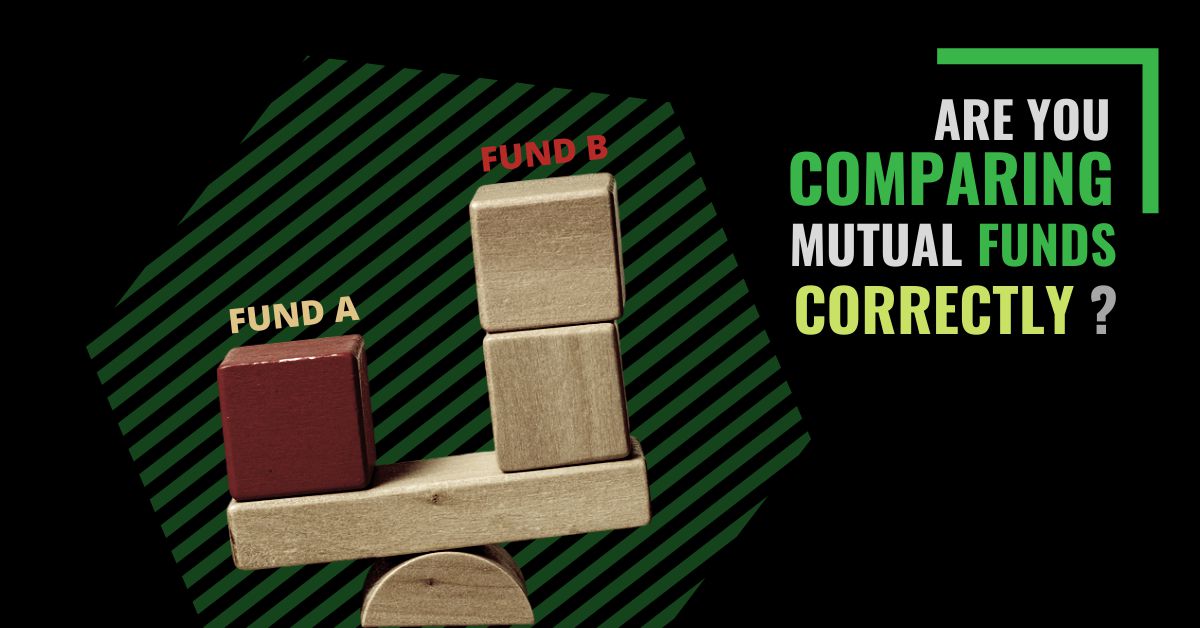How Should Mutual Fund Comparison be Done?

Last Updated : June 18, 2020, 5:32 p.m.
The biggest dilemma for most people wanting to invest in mutual funds is how should one compare different mutual fund schemes and where. This is a very important step towards choosing the right mutual fund schemes and adding them to your portfolio. There are four important factors one should look at when doing the mutual fund comparison.
Top Mutual Funds to Invest in Now
Factors Basis Which Mutual Funds Should be Compared
Past Returns
This is the most important factor in the mind of investors while choosing mutual fund schemes. The most common mistake people commit here is looking at the best performing fund currently (last 6 months or a year) and investing in that fund. Instead, one should look at the last 10-15 years’ performance since it gives the real picture of how a certain fund has done over various market cycles. Only looking at the last one year could be fraught with danger since short term performances keep on changing. A fund which is the best performer today might not be able to deliver the same performance next year.
Risk and Performance Metrics
While returns are the most important parameter that people look at but its equally important to also weigh in the risk a fund carries. While doing the mutual fund comparison, most people tend to oversee this and that leads to a wrong choice of funds. The important risk and performance metrics to look for are standard deviation, beta, alpha and sharpe ratio. Let us understand each one:
- Standard Deviation – This is a measure of the dispersion from the mean, simply put this number denotes the volatility in a fund. A fund with a lower standard deviation would be less volatile i.e. abrupt movements both on upside and downside and a fund with a higher standard deviation will be more volatile. Therefore, one should choose a fund with a lower standard deviation.
- Beta – This is also a measure of volatility or risk in a fund compared to the market or the fund’s benchmark. The beta of the market is assumed to be 1.0, so if a fund has a beta of 0.80 it means it has lesser risk or volatility as compared to its benchmark. So, if the market were to fall 1% this fund will only fall 0.80% and vice-versa. As evident, a fund with a lower beta carries a lower risk.
- Alpha – This is a measure to gauge a fund’s performance on a risk-adjusted basis. Simply put, an alpha of 2% means that the fund will outperform its benchmark by 2%. If the alpha is -2%, this indicates an underperformance of -2% vis a vis the benchmark. Thus, the higher the alpha the better it is.
- Sharpe Ratio – This ratio tells an investor whether a fund’s returns are due to good investment calls taken by the fund manager or due to him/her taking an extra risk. For e.g.-there are two funds A & B and fund A has delivered 3% higher returns than fund B. We would normally assume that fund A is a better fund but the sharpe ratio of fund A & B will tell us whether that extra 3% came by taking an extra risk or not. Thus, the greater the sharpe ratio the better its risk-adjusted returns.
To sum up this part, while comparing funds one should prefer funds with a lower standard deviation & beta and higher alpha & sharpe ratio.
Expense Ratio
This is the cost you pay for investing in a mutual fund. Depending on the fund size and category, this varies between 0.05% to 2.50%. If a fund has an expense ratio of 1.20%, it means that the mutual fund company is deducting 1.20% as its fees annually for managing money. This gets adjusted in the NAV daily. When doing the mutual fund comparison, one should go for funds with a lower expense ratio. However, this should not be seen in isolation, there might be a fund with a lower expense ratio but might be lacking in returns or risk metrics.
Fund Manager
He is the guy who is managing your money, so one needs to know about his credentials. One fund manager might be managing more than one mutual fund scheme, we should look at the track record and risk metrics of the funds managed by him/her. The stability of a fund manager is another important aspect-how long he/she has been managing the fund. A fund manager with a longer period of managing a fund and consistent track record should be preferred.
Now, we know on what basis mutual funds should be compared but the question arises where one can get this data. There are two sources we would recommend:
- Mutual Fund Websites – All this data is available on the individual mutual fund websites. One can visit the websites and download the factsheet which is a monthly document mutual funds issue and contains all this data.
- Value Research – This is a great tool for one to analyze and compare mutual funds in one click. All the metrics discussed above are updated and one can easily do the mutual fund comparison.
Before investing, it is important to compare and analyze different mutual fund schemes on the factors mentioned above. This would help in making an informed decision, have a good investing experience and avoid negative surprises later.